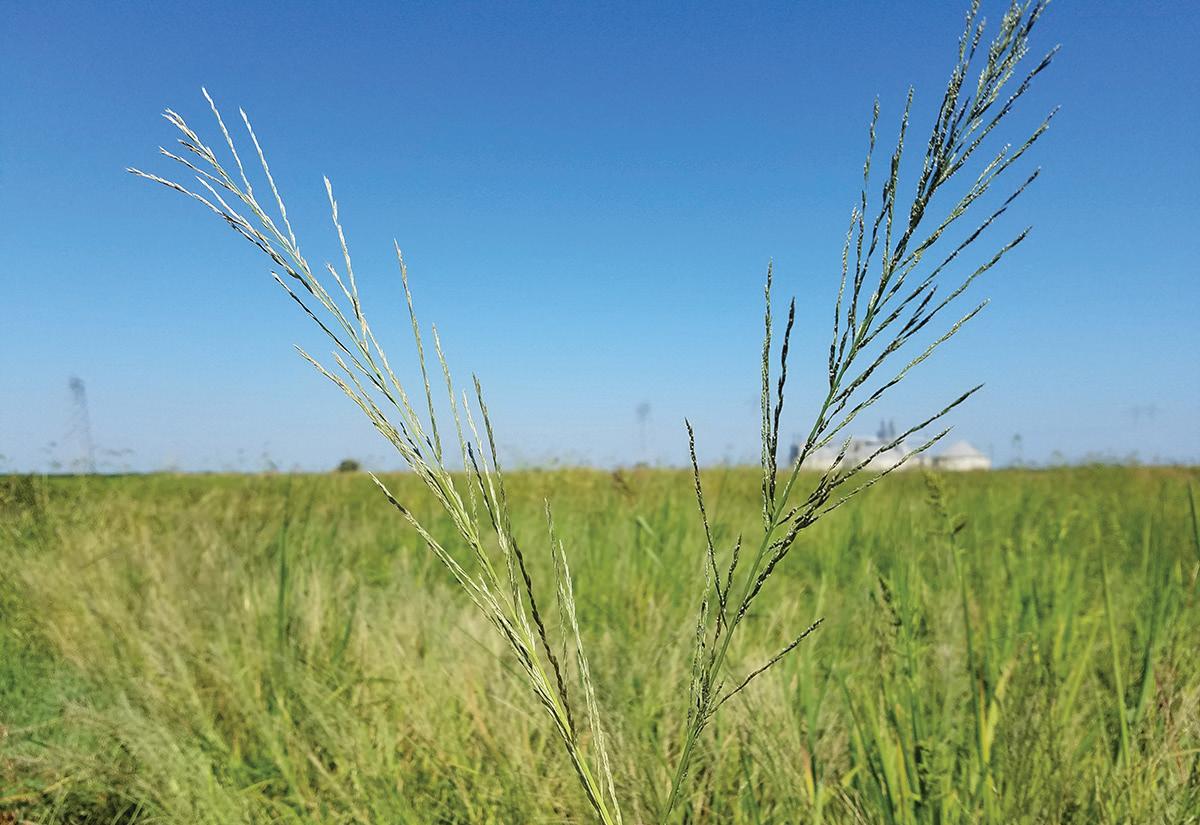
3 minute read
Specialists Speaking
Stay ahead of weeds, and don’t let them go to seed
DR. WHITNEY BRIM-DEFOREST
CALIFORNIA University of California Cooperative Extension Rice Adviser Sutter, Yuba, Placer and Sacramento Counties wbrimdeforest@ucanr.edu
This season started fast and a bit earlier than normal. Temperatures have also been relatively warm, meaning that rice planted early in the season was able to get well established, likely with vigorous early growth. Weeds will also respond to the warm temperatures, germinating earlier and growing more rapidly due to the faster accumulation of growing degree days.
For watergrass control, we are having increasing issues every year due to the spread of multiple herbicide-resistant late watergrass and barnyardgrass, as well as a possible new biotype that appears to be resistant or tolerant to most of our grass herbicides. Yield decreases from grasses are higher than any other weed of rice, so it is important to get them under control early.
The longer they are allowed to compete with the rice, the greater the yield impact. A preemergent herbicide or the use of a stale seedbed in heavily infested fields will ensure that the rice can better outcompete the grasses early in the season.
For good control, the most effective herbicide plan involves multiple early season applications with a mix of modes of action. A late-season foliar application (cleanup application) may also be necessary.
We now know that sprangletop can emerge in anaerobic (flooded) conditions, even when fields are continuously flooded. Sprangletop was previously thought to be able to emerge only when a field had been drained.
However, due to the slower emergence under flooded conditions compared to flushed conditions, early granular herbicide applications may not fully control sprangletop. (The herbicide will have dissipated before the weeds have emerged).
Bearded sprangletop (left) and Mexican springletop
MATTHEW QUINTON
Therefore, a later granular application applied around the two- to three-leaf stage of rice or a foliar application applied after tillering is necessary for good control. Remember that it is ineffective to apply an herbicide once the weeds have headed (gone to seed), as the seeds may already be viable and will not be killed by the herbicide.
Preventing weeds from going to seed is important for longterm weed management, as the seeds are deposited in the soil seedbank and may be viable for many years.
Sedge control depends on the species. For smallflower umbrella sedge, herbicide resistance is widespread. Therefore, it may be necessary to make multiple applications, one early in the season and a follow-up later in the season with a different mode of action.
For ricefield bulrush, resistance is not yet widespread, and one herbicide application is usually enough to control it.
Broadleaf control is important, but thankfully, herbicide resistance is only found in redstem (redberry) and some arrowhead, and it does not appear to be widespread nor is it multiple-herbicide resistant.
Ducksalad and monochoria are still susceptible to labeled herbicides. The most difficult part of controlling broadleaf weeds is they are not uniform across the rice-growing region. It is therefore important to know the species in each field, as many herbicides are not broad-spectrum on broadleafs.
Don’t let late-season issues get in your pocket
DR. JARROD T. HARDKE
ARKANSAS Assoc. Professor/Rice Extension Agronomist University of Arkansas System Division of Agriculture jhardke@uada.edu
Disease and insects in rice always seem to try to get in our pocket late in the season. A few general guidelines can help us best manage these problems while minimizing their impact on our profitability.
Sheath blight and the smuts (kernel and false) are the most common disease issues each season. With sheath blight, we have the ability to scout and spray based on cultivar susceptibility and disease progress. Remember that after midseason when you have greater than 50% positive stops on moderately susceptible cultivars or greater than 35% on susceptible or very susceptible cultivars, fungicide treatment may be warranted.
However, just because sheath blight can be found doesn’t mean it’s at treatment level. It also needs to be threatening the three uppermost leaves in the canopy. If we can make it to 50% heading (panicle beginning to emerge from 50% of main tillers) with the upper three leaves clean, then we have outrun sheath blight.
So the threshold is based on cultivar susceptibility, percent positive stops for sheath blight in the field and progress of the










